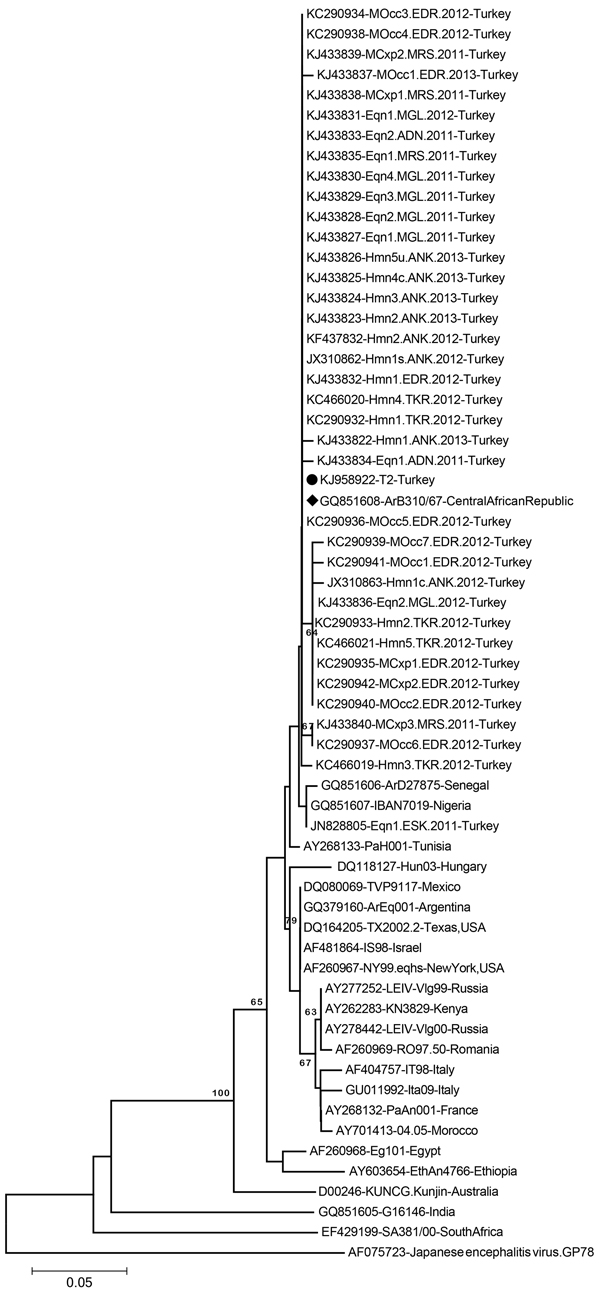Volume 21, Number 2—February 2015
Dispatch
Close Relationship between West Nile Virus from Turkey and Lineage 1 Strain from Central African Republic
Figure 2

Figure 2. Neighbor-joining phylogenetic tree constructed on the basis of the West Nile virus (WNV) partial envelope gene nucleotide sequences (183 nt) of 38 WNV strains from Turkey and selected global strains. Black dot indicates WNV isolate T2 from Turkey, and black diamond indicates the closely related strain ArB310/67 from the Central African Republic. Bootstrap values of major branches are given for 1,000 replicates. GenBank accession number, name, and country of isolation are given for global strains. Local sequences are indicated by GenBank accession number, host, location, and year. ADN, Adana Province; ANK, Ankara Province; Cxp, Culex pipiens; EDR, Edirne Province; Eqn, equine; ESK, Eskisehir Province; Hmn, human; M, mosquito, MGL, Mugla Province; MRS, Mersin Province; Occ, Ochleratatus caspius; TKR, Tekirdag Province. Scale bar indicates substitutions per site.